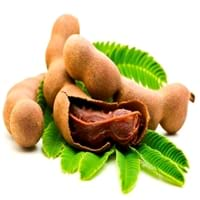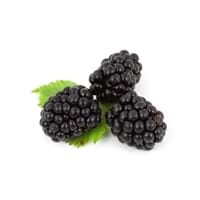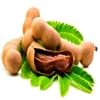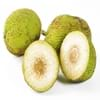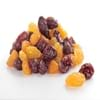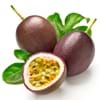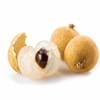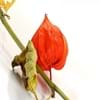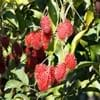Health Benefits
Boosts immune system, Boosts respiratory health, Cancer prevention, Digestive aid, Piles treatment
Cancer prevention, Heart care, Increases metabolic rate, Reduces stress, Treatment of dysentary, Treatment of skin Diseases
General Benefits
Beneficial in improving nerve function, Protects against parasites and worms, Relieves pain
Digestive aid, Maintains healthy cholesterol level, Strengthens bones
Skin Benefits
Anti-aging benefits, Brightens and lightens complexion, Exfoliates skin, Hydrates skin, Treatment of dark spots
Hydrates skin, Skin rejuvenation, Skin revitalization
Hair Benefits
Prevents hair loss
Promotes longer and healthier hair
Allergy Symptoms
Abdominal pains, Breathing difficulty, Dizziness, Eczema, Fainting, Hives, Itching, Nasal congestion, Swelling of face, Tingling sensation in mouth, Vomiting
Facial muscle tension, Pressure in sinus, Respiratory congestion, Runny nose, Sneezing, Tingling sensation in wrist and face
Side Effects
Decrease in blood sugar levels, Induces acid reflux, Allergic reaction, Tooth decay, May form gallstones
Nausea, Vomiting, Might cause change of urine color
Best Time to Eat
Along with meal, As a snack in the late afternoon, Don't consume at night and before bed, Strictly avoid empty stomach
Best if taken as a breakfast (or empty stomach), As a snack in the late afternoon, Don't consume at night and before bed, Eat the fresh ones, avoid mixing with any other foods, don't eat after meal., Morning time (before lunch)
Vitamin B5 (Pantothenic Acid)
Vitamin C (Ascorbic Acid)
Vitamin K (Phyllochinone)
Phytosterol
Not Available
Calories in Fresh Fruit with Peel
Not Available
Calories in Fresh Fruit without Peel
Not Available
Calories in Canned Form
Not Available
Calories in Pie
Not Available
Season
Spring, Summer
Spring, Summer
Varieties
PKM 1, Urigam, Hasanur, Tumkur prathisthan, DTS 1 and Yogeshwari
Prime Ark, Prime Jim, Illini Hardy, Kiowa, Shawnee, Apache, Arapaho, Chester, Hull, Natchez, Navaho and Triple Crown and Von
Color
Brown, Reddish-brown
Purplish black
Inside Color
Brown
Magenta
Shape
Curving Cylinder
Round
Taste
Sour-Sweet
Juicy, Sweet
Origin
Africa
Asia, Europe, North America, South America
Soil Type
Loam, Sandy, Sandy loam, Well-drained
Well-drained
Climatic Conditions
Humid to dry, Rainfall, Warm to hot climate
Dry, Warm to hot climate
Facts about
- Tamarind is used to prevent body odor.
- African children use the tamarind seeds in games.
- No cases of tamarind toxicity or allergy reported till date.
- There are around 2000 varieties of blackberries throughout the world.
- 80-85 degrees is the ideal temperature for its production.
- Leaves of blackberry tree are used to treat sore throats and mild inflammation of the gums.
Top Producer
India
United States of America
Other Countries
Africa, Australia, Brazil, China, Mexico, Nigeria, Sudan, Taiwan
China, New Zealand, Serbia, South Africa
Top Importer
United States of America
United States of America
Top Exporter
Thailand
Mexico
Botanical Name
Tamarindus indica
Rubus Fruticosus
Synonym
Tamarindo, tamarindus
Rubus Millspaughii or Rubus Laciniatus
Subkingdom
Tracheobionta
Tracheobionta
Division
Magnoliophyta
Magnoliophyta
Class
Liliopsida
Magnoliopsida
Species
Tamarindus indica
Rubus fruticosus
Generic Group
Tamarind Sub
Rose
Difference Between Tamarind and Blackberry
We might think that Tamarind and Blackberry are similar with respect to nutritional value and health benefits. But the nutrient content of both fruits is different. Tamarind and Blackberry Facts such as their taste, shape, color, and size are also distinct. The difference between Tamarind and Blackberry is explained here.
The amount of calories in 100 gm of fresh Tamarind and Blackberry with peel is Not Available and 43.00 kcal and the amount of calories without peel is 239.00 kcal and Not Available respectively. Thus, Tamarind and Blackberry belong to High Calorie Fruits and Low Calorie Fruits category.These fruits might or might not differ with respect to their scientific classification. The order of Tamarind and Blackberry is Fabales and Rosales respectively. Tamarind belongs to Fabaceae family and Blackberry belongs to Rosaceae family. Tamarind belongs to Tamarindus genus of Tamarindus indica species and Blackberry belongs to Rubus genus of Rubus fruticosus species. Beings plants, both fruits belong to Plantae Kingdom.
